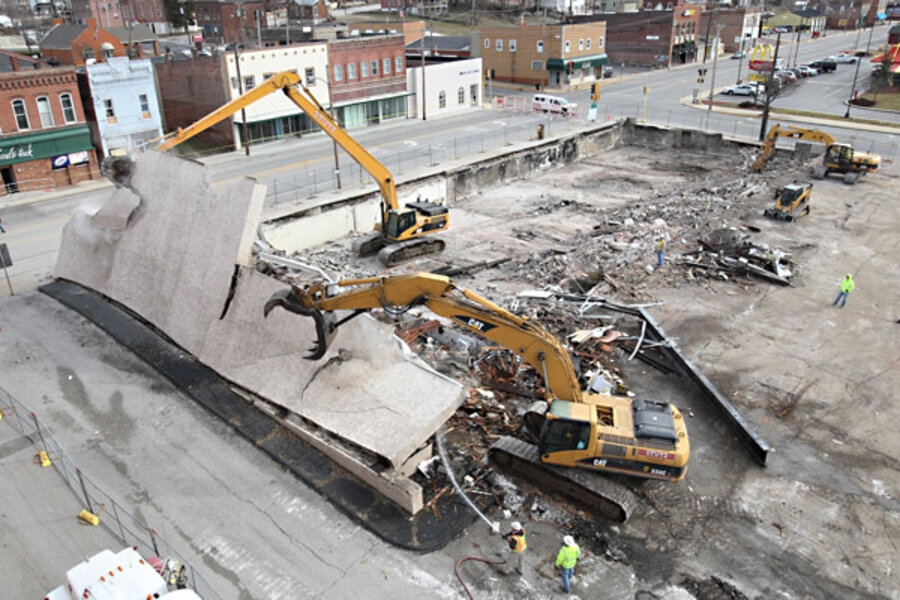Should states pay bonds to knock down buildings?
Loading...
Two Ohio Members of Congress have introduced a bill to allow states to issue tax-exempt bonds to demolish buildings. Not to build them, but to destroy them.
Score this one as a bad solution to a real problem.
The lawmakers, Republican Steve LaTourette and Democrat Marcia Fudge, want to allow state governments to issue up to $4 billion in revenue bonds to flatten abandoned buildings. Half would be divided among all states, the other half would be allocated only to states that Congress designates as hardest hit by the housing crisis (of which, I assume, Ohio will be one). Thanks to The Bond Buyer’s Jennifer DePaul for finding this one.
The problem is serious. Cities in Ohio and Michigan struggle with entire neighborhoods that have been nearly depopulated by the combination of foreclosures and disappearing jobs. Abandoned houses and commercial strips are magnets for crime and blight and may discourage future redevelopment. Tearing down often-gutted structures might sometimes make sense.
But why should the federal government subsidize what is the most local of activities? While teardowns may be the answer in some communities, why encourage the activity even when it is not appropriate?
Grassroots solutions are sprouting. In Flint, MI, the Genesee County Land Bank is acquiring foreclosed properties and returning them to productive use. In some neighborhoods of Detroit, cheap housing and low cost commercial space is beginning to attract trendy artists, designers, and high-tech types. Local markets will sort this out.
But with targeted demolition bonds, it would not be hard to imagine a developer getting a bigger subsidy for nuking a house than restoring it. And, of course, there is the matter of who will benefit: well-connected local construction firms, to say nothing of investment bankers and bond lawyers.
Trust me, it won’t often be the couple who want to do a tear-down or the three business partners who want to buy and repair a couple of houses at a time.
In the end, it may not be local taxpayers either. Investors in revenue bonds demand a steady stream of cash to repay the debt, such as a bridge toll. But it is hard to imagine an empty lot generating much revenue.
Supporters of the bill say the funds would come from non-profits, appropriated state and local dollars, or perhaps local land banks. This is not, shall we say, the kind of predictable revenue stream investors like. It will drive up interest costs. And guess who may end up holding the bag if the bonds crater.
State and local governments have been using tax-exempt bonds to pick winners and losers in the housing and commercial development markets since the 1970s. When the abuses became too egregious, Congress cracked down by limiting the purposes for which these revenue bonds can be used or capping the amount of this debt that can be sold.
Still, tax-exempt mortgage bonds for private housing have been so ubiquitous that I can’t help but wonder how many of those now-vacant homes were subsidized with tax-exempt dollars in the first place.
What a deal. First taxpayers pay to build them. Then we pay to flatten them. Then…. Well, you know what will come next.







